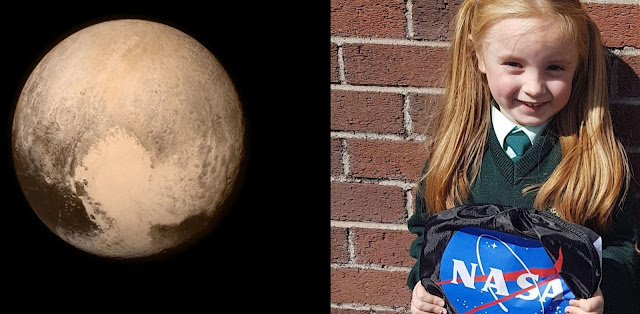This Is Big: Scientists Solve One of the Great Mysteries of the Moon's Formation
The University of Texas’ research team has discovered that the formation of the moon’s crust composed by one mineral could not be explained by the initial crust formation and must have been a result of a major secondary event. The Moon experienced quite the rough beginning. There are few theories about its creation.
Although it’s still debated, it is believed by most scientists that the moon was formed by a chunk of the Earth that had been hacked off during a planetary collision and spent most of its early years with its surface covered by an ocean of molten magma before cooling and forming the lunar surface we know today.
Nick Dygert, assistant professor at the University of Tennessee, Knoxville, who was temporarily involved in the research said the following about the discovery: “it’s fascinating to me that there could be a body as big as the Moon that was completely molten.”
The University of Texas lead a research team at the Austin Jackson School of Geosciences that created a magmatic melt that was identical to the one that had formed the lunar surface. Through this, many new insights were uncovered such as how the modern moonscape came to be. The results of this study indicate that the Moon’s crust had initially formed from rock floating to the surface of the magmatic ocean and cooling once at the surface.
Nick Dygert collaborated with Yoshio Kono, a scientist at the Geophysical Laboratory at the Carnegie Institution of Washington, professor James Gardner, Jung-Fu Lin, associate professor of Jackson School, and Ph.D. student Edward Marshall.
Up to 98% of large portions of the Lunar crust are composed of a mineral plagioclase. A prevailing theory which was tied into the research states that such a purity is due to plagioclase floating to the surface of the magma ocean over the course of hundreds of millions of years, slowly solidifying into the Moon’s crust. Such a theory relies upon a specific viscosity of the magma ocean that would allow plagioclase to separate from other dense minerals it would have crystallized with, and to rise to the surface.
Dygert decided to put the plausibility of this theory to the test by directly measuring the viscosity of the lunar magma. This required the recreation of the molten material in the lab by flash melting mineral powders in proportions relative to those on the Moon in a high pressure apparatus at a synchrotron facility. Such a machine shoots out a concentrated beam of x-rays and then measures the time it took for a melt-resistant sphere to sink through the magma.
Jung-Fu Lin said the following about such a feat: “previously there had not been any laboratory data to support models. So this is really the first time we have reliable laboratory experimental results to understand how the Moon’s crust and interior formed.”
The results of this study indicated that the magma had a very low viscosity, somewhat relative to that of olive oil and corn syrup at a room temperature. This value would have supported a plagioclase flotation. There is a downside, however-- this viscosity would have lead to the plagioclase mixing with the magma which would trap other minerals within the plagioclase crystals, resulting in an impure crust upon the lunar surface.
This does not mean that the lunar surface isn’t pure-- satellite-based investigations indicate that a significant portion of the lunar crust is a pure one. This then implies that there must have been a secondary altercation upon the surface that would have resulted in the resurfacing of the Moon, exposing a deeper, younger and purer layer of floatation crust. Dygert confirmed that the results of the study support a “crystal overturn” occurred. This means that the previous, impure crust was replaced with young, buoyant, hot deposits of pure plagioclase and over time, the previous crust would have been eroded away by asteroids colliding with the Moon.
The study’s results exemplify the sheer possibility of small-scale experiments-- they can lead to the large understanding of geological processes building planetary bodies in our solar system and in others as well.
Nick Dygert added onto the possibility of small-scale experiments by saying the following: “I view the Moon as a planetary lad. It’s so small that it cooled quickly, and there’s no atmosphere or plate tectonics to wipe out the earliest processes of planetary evolution. The concepts described here could be applicable to just about any planet.”

Comments
Post a Comment